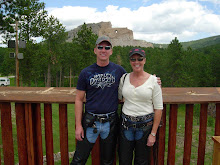I'm reading a fascinating book by Earl Hess - "The Rifle Musket in Civil War Combat, Reality and Myth". Hess follows very much in line with Paddy Griffith's earlier work, and convincingly lays out evidence that the rifle musket did very little to change battleline combat ranges. A combination of visibility, unit control, tactical decisions, terrain, and weapon ballistic characteristics, made the rifle musket battleline engagement ranges somewhat longer, but still appreciably short of what the weapon's capabilities were. I don't have the exact number, but he suggests that the average battleline engatement range was around 90 yards, vs. 60 to 70 in the Napoleonic era.
BUT - the big difference was that skirmishers and snipers now had a much more capable weapon, and used it with effectiveness. The skirmish ranges would be 200+ yards, with skirmishers deployed from 100/200 yards in front of the battleline to as much as 500 to 800 yards!
Hess points out that the Federal armies had a distinct skirmish advantage when compared to the Confederates in the Western theatre. In particular, he spends considerable time discussing the Atlanta campaign, when skirmishers really came into their own. Part of the Federal advantage was leadership and an emphasis on skirmishers, while part of the Federal advantage was that they had the supply system in place to provide plenty of ammunition for the skirmshers to fire off! Confederate units labored under ammo limitations, and fired distinctly lower numbers of rounds.
I started thinking about representing skirmishers in Field of Battle. I truly think wargame rules get skirmishers wrong. In my opinion, they're best represented as an abstracted benefit. Its very difficult to model one of their primary functions - intelligence, being the "eyes and ears" of a unit.
I think the best way is to look at unit ranges over the horse and musket period. From "bad" skirmishing or non-skirmishing Napoleonic systems and earlier (SYW, WSS), I can broadly say that there aren't significant skirmishers. They'd use the battleline vs. battleline model, with roughly a 100 yard range.
As you get the "good" Napoleonic skirmish units (French, British, later Continental armies), that range doubles, as a skirmish screen proceeds the battleline. So, let's say the range is 200 yards.
For the ACW, those numbers just go up, to a net of 400 yard range.
The longer ranges are abstracted in game terms by the long range of the units. I'd propose that an interesting tweak to Field of Battle would be to disallow long ranges for units that were "out skirmished. I tossed the graphic (below) together to illustrate my thinking.
I need to stop messing with this and get back to editing Pulse of Battle!
Subscribe to:
Post Comments (Atom)


Very interesting. I always like how single based skirmishers look on the terrain. I am fine how most rulesets model skirmishing units, but generally do not like how they deal with attached skirmishers. I would like a little more than abstraction and your little picture has given me an idea.
ReplyDeleteJohn
A very interesting idea that bears thinking about. I suspect, though, that there is more to the story than you have let on here concerning the ACW. For one thing, CSA armies did astonishingly well in the West, but were almost never able to find the final 'oomph' to shove the Union troops off the field. And that was due to lack of numbers, I feel. They could bring the Union armies to the tipping point, but as that took every effort they could mount, there was nothing left to do the actual tipping.
ReplyDeleteThe other problem - for both sides, really - was that the armies were very flexible. They tended to bend, rather than break, which Union armies did many a time, in all theatres.
But I do agree with you that the difficult and untamed terrain in which most of the battles were fought would have reduced the effective ranges of rifled muskets. Rate of fire in the late war became much more decisive.
The Union may also have had a considerable edge in their specialist skirmishers such as Berdan's Sharpshooters, one battalion of which fought in the the East and the second in the West. Aside from the rare sniper, I don't think the CSA armies had any counterpart to these guys.
It is always interesting to encounter new ideas and interpretations of history and to explore how they might impact upon wargames. Thanks,
Ion